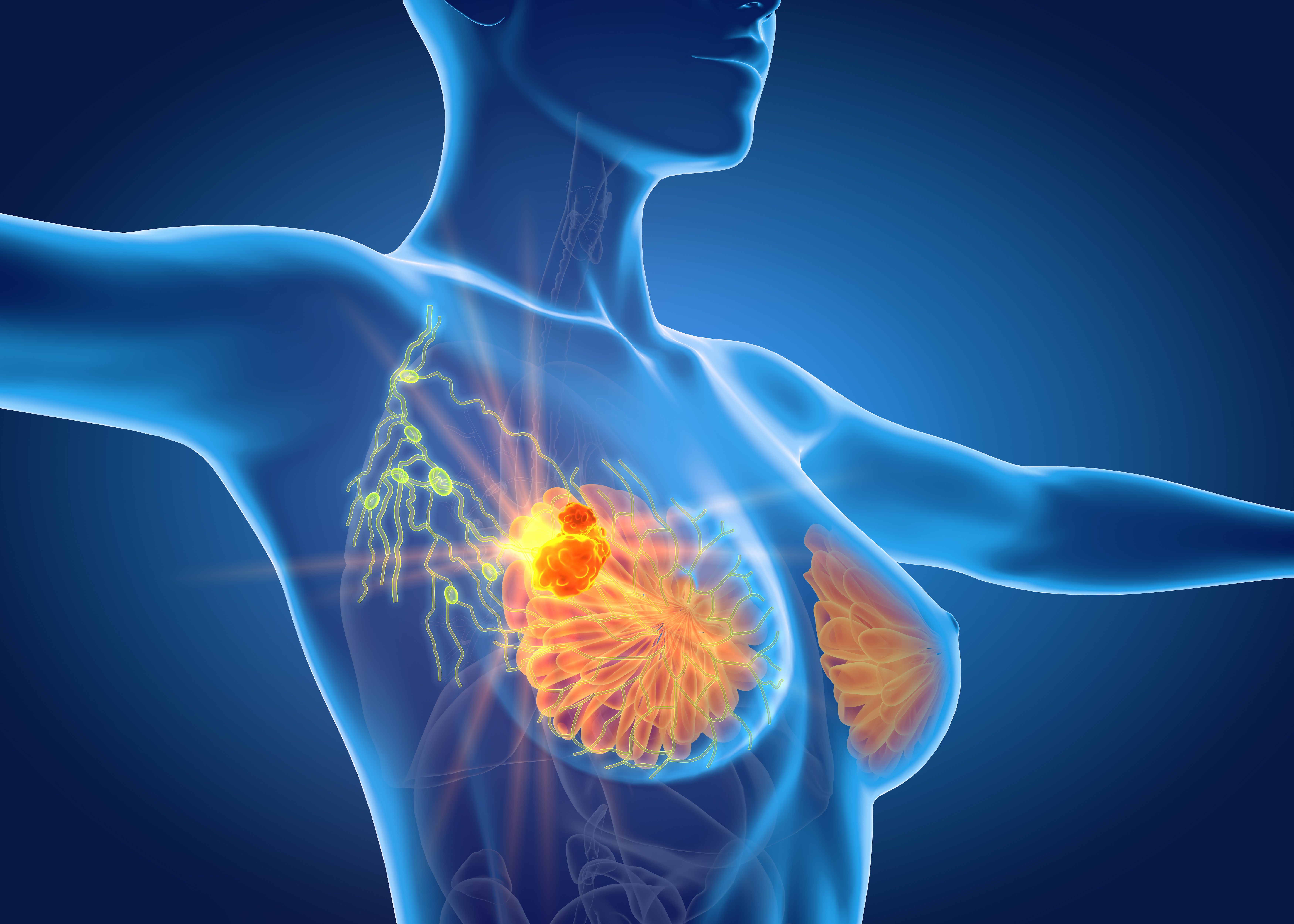
Women with interval breast cancers (IBCs) who were diagnosed within 1 year of a negative mammogram test result were found to be associated with worse survival rates than women with breast cancers that were detected by screenings, according to a study published in JAMA Network Open.
Among the IBC cases, the researchers suggest a uniquely aggressive biology may be the explanation for a difference in survival rates.
“Among postmenopausal women from the (Women’s Health Initiative), IBCs diagnosed within 1 year after negative mammogram results were associated with a larger tumor size, more lymph node involvement, a more lobular histologic type, and higher breast cancer–specific mortality than breast cancers detected by screening,” wrote the researchers.
Overall, IBCs diagnosed within 1 year after negative mammogram results showed significantly more lobular histologic characteristics (13.0% vs. 8.1%), a larger tumor size (1.97 cm vs 1.43 cm), a higher clinical stage (regional, 28.4% vs 17.3%; distant, 3.7% vs 0.6%), and more lymph node involvement (27.1% vs 17.0%) than breast cancers detected by screening.
More, the breast cancer-specific mortality hazard ratios (HRs) for IBCs diagnosed within 1 year after negative mammogram results were significantly higher than breast cancers detected by screening (HR, 1.92; 95% CI, 1.39-2.65).
“The poor prognosis for women with IBCs diagnosed within 1 year after negative mammogram results might not be due to delayed diagnosis but rather to distinct biological characteristics associated with the cancer,” wrote the researchers. “For instance, increased lymph node involvement is often seen in IBCs and cannot be accounted for entirely by delayed diagnosis but rather may be due to a unique biology.”
Of the 3019 participants in this study, the mean age was 63.1 years at enrollment and 68.5 years at diagnosis. The researchers examined a total of 1050 cases of IBC, with 324 diagnosed within 1 year from a mammogram with negative results and 726 diagnosed between 1 and 2.5 years after the last mammogram with negative results. The other 1969 cases of breast cancer were detected by a screening.
While higher breast cancer-specific mortality remained significant for IBCs diagnosed within 1 year after adjusting for subgroups including trial group, molecular subtype, waist to hip ratio, histologic characteristics, and either tumor size (HR, 1.46; 95% CI, 1.03-2.08) or lymph node involvement (HR, 1.44; 95% CI, 1.03-2.01), significance was lost when including tumor size and lymph node involvement (HR, 1.34; 95% CI, 0.96-1.88) in the model.
The study’s strengths included a large diverse population of patients, a longitudinal cohort with protocol-mandated screening mammograms over a 10-year period, an extensive follow-up time period, and a robust set of covariates.
As for the weaknesses, the researchers could not specifically differentiate true IBC from missed breast cancers detected by screening. More, it’s likely the sample included missed breast cancers or false negatives, further skewing the data.
More, the lack of data regarding breast density, which is an important factor associated with IBC regardless of age and the rate of IBC increases gradually with increasing breast density, posed an issue for the researchers.
There are a number of clinical implications as a result of this research. First, women with breast cancer symptoms at the time of negative screening mammogram results should “either be recalled more frequently, have a shorter screening period, or undergo another imaging modality, such as ultrasonography or magnetic resonance imaging.” Also, the use of germline genomic testing with mammography can help distinguish indolent from aggressive breast cancers detected by screening.
Reference:
Irvin VL, Zhang Z, Simon MS, et al. Comparison of Mortality Among Participants of Women’s Health Initiative Trials With Screening-Detected Breast Cancers vs Interval Breast Cancers. JAMA Network Open. doi:10.1001/jamanetworkopen.2020.7227.
"breast" - Google News
August 16, 2020 at 01:02AM
https://ift.tt/31VSb4n
Distinct Biological Characteristics of Interval Breast Cancer May Explain Worse Prognosis After Negative Mammogram - Cancer Network
"breast" - Google News
https://ift.tt/2ImtPYC
https://ift.tt/2Wle22m
Bagikan Berita Ini















0 Response to "Distinct Biological Characteristics of Interval Breast Cancer May Explain Worse Prognosis After Negative Mammogram - Cancer Network"
Post a Comment